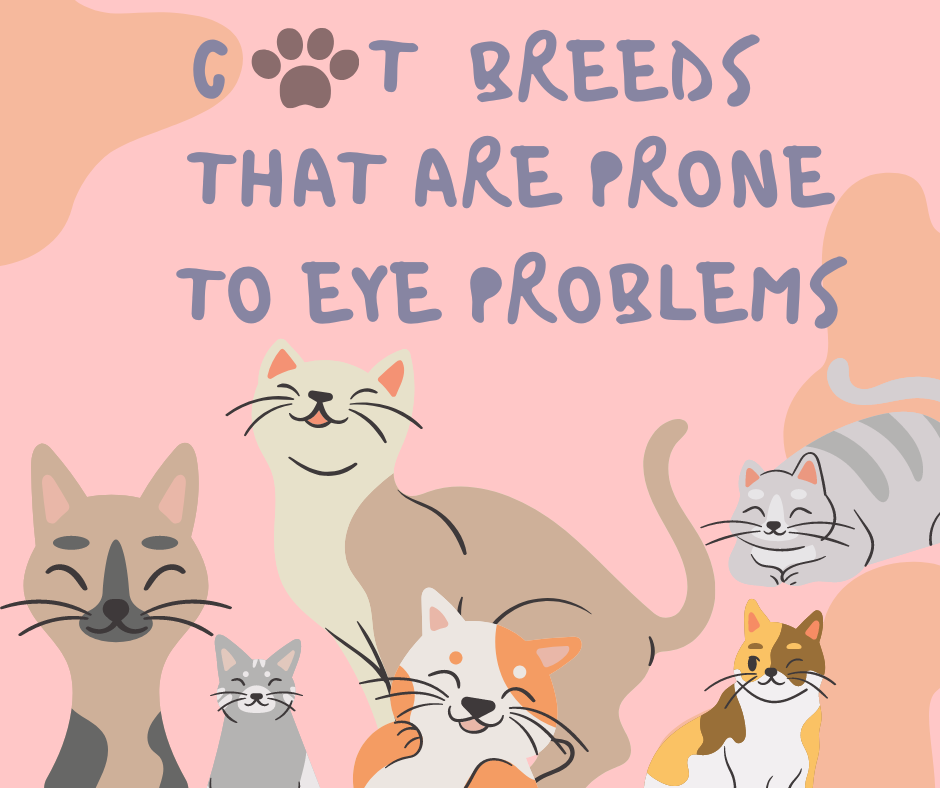Having to give equal time to the feline population who read my blogs.
Cat breeds prone to developing eye problems:
- Siamese
- Exotic Shorthair
- Persian (most short-nosed/flat-faced cats)
- Himalayans
- Burmese
- Abyssinian
- Somalis
Just like humans, cats suffer from a variety of eye diseases. Cat’s eyes, while structurally similar to the human eyes, they have some distinctive features also:
- A nictitating membrane is called “the third eyelid”. The nictitating membrane helps to keep the surface of the cat’s eye moist and protects it from damage.
- Tapetum lucidum is a specialized layer of tissue beneath the retina that reflects incoming light not absorbed by the retina.
- Elliptical pupils, this allows the pupils to adjust to changes in light much quicker than humans can with round pupils.
Some diseases are of genetic origin and some are age-related. The most common diseases seen in cats are:
- Cataracts
- Strabismus
- Glaucoma
- Conjunctivitis
- Progressive Retinal Atrophy
- Entropion is when the edges of the eyelid fold inward.
- Corneal Sequestrum is when a piece of the cornea has died off and is being rejected by the healthy tissue. The sequestrum takes on a brownish discoloration.
- Ocular Manifestations of Systemic Diseases
Cats are very good at hiding illness or injury. Look into your cat’s eyes regularly. Be aware of any changes in your cat’s eyes:
- Know what is “normal” for your cat.
- Know the signs of eye disease. Rubbing, squinting, redness, swelling, eye discharge, sneezing, and nasal discharge.
- Cats generally care for their own grooming, but if you notice gunk around the eye, you can clean it carefully with a damp cotton ball.
- All cats should be kept indoors to help them stay safe and healthy. If your cat goes outdoors, it could injure its eyes while running through the bushes or fighting with another cat or animal. They could also catch a contagious disease, which can cause issues like pink eye or uveitis.
- Visit your veterinarian regularly.
While cats don’t have as many eye problems as dogs, feline eye issues tend to be chronic and may require lifelong care. The case with virtually all feline health problems, recognize genetic predispositions and environmental stressors. The earlier a cat’s vision impairment has been diagnosed, whether the result of disease or injury, the better it may be treated. Your cat may or may not experience eye problems during his lifetime, but it’s wise to support his ocular wellness with a healthy lifestyle
Sources:
#eyegotcha
#PittsburghEyeCare
#PittsburghOptometrist

